My 2017 Ontario birding “Big Year”
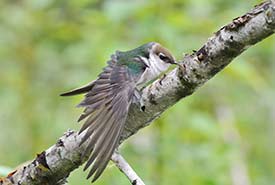
Violet-green swallow at Thunder Bay Marina, Ontario's third ever record of this species. (Photo by Jeremy Bensette)
Last year was a pretty “big” one for me, birding-wise! I committed to completing a "Big Year," a quest to see as many bird species as possible in one year in my beautiful home province of Ontario, and held onto that goal until dark on...
Counting crows: A winter walk reveals an abundance of birds in the Fraser River Estuary
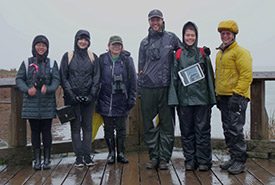
Conservation Volunteers ready for birding (Photo by Fiona Walsh)
For more than a century, an ongoing citizen science survey has taken place during the holiday season. Known as the Christmas Bird Count, the first survey was initiated by ornithologist Frank M. Chapman on Christmas Day in 1900. One hundred and...
What's so special about Kenauk?
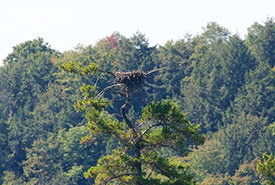
Osprey nest on Lac Papineau in Kenauk, viewed by several participants in the 2016 survey (Photo by Richard Gregson)
Kenauk is big. Really big! In terms of surface area, it’s the largest conservation project ever undertaken by the Nature Conservancy of Canada (NCC) in Quebec, and certainly one of the largest in Canada. The site, located about eight...
Protecting what matters most: Identifying and conserving freshwater key biodiversity areas
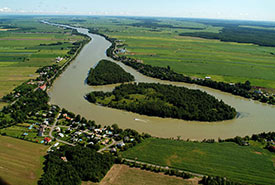
Richelieu River, îles de Jeanotte et aux Cerfs, QC (Photo by Claude Duchaîne)
Nature conservation is fuelled by urgency. With over 750 Canadian wildlife species at risk, and many habitats being lost and degraded, it’s clear we need to do more conservation in Canada, and we need to do it faster. There are spaces and...
Emerald in the rough
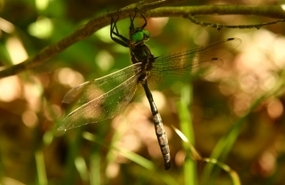
Hine's emerald dragonfly at Minesing Wetlands, ON (Photo by Chris Evans)
Deep in the heart of the Minesing Wetlands, southern Ontario’s third-largest wetland system, lives a mysterious creature. It is thought to inhabit only 50 distinct locations in the entire world, most of which are concentrated around the...
10 good news nature conservation stories from 2017 that prove we have the solutions
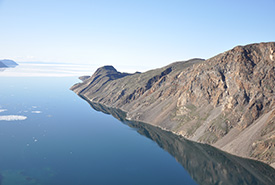
Inlet around Lancaster Sound, NU © Parks Canada/Diane Blanchard
Nature conservation can seem a long and arduous journey. Current issues, from climate change to protecting north Atlantic right whales to micro-plastics in our oceans, can seem overwhelming. When viewed as a snapshot in time, these issues can even...
Identifying bats by their distinctive voices
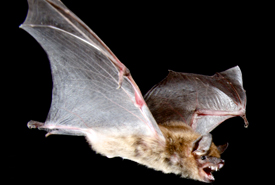
Big brown bat (Photo by Brock Fenton)
Having studied bats for more than a decade, I have been fortunate to be able talk to students in their classrooms while doing bat presentations, or to landowners while I trapped bats on their properties. Everyone has a bat story. Everyone loves...
The last places on Earth: Protecting globally rare habitats in Canada (Part two)
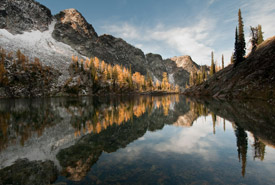
Alpine Lake on Darkwoods, BC (Photo by Bruce Kirkby)
In part one of our blog on protecting globally rare habitats, Dan Kraus and I explored some of these places found in Canada and how the Nature Conservancy of Canada (NCC) is protecting these important areas. We also identified some of the...
Parasitism: The dark side of symbiosis
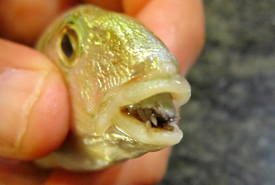
Sand steenbras infected with tongue-eating louse (Photo by Marco Vinci/Wikimedia Commons)
In nature, when two individuals of different species often live in close association with each other, this leads to a phenomenon called symbiosis. There are three types of symbiosis: Mutualism is a win-win situation for both organisms because...
A chance encounter with Charles Darwin
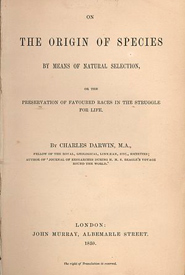
The title page of the original first edition of On the Origin of Species, 1859 (Photo from Wikimedia Commons)
The day after I finished my last undergrad exam was warm and sunny — perfect for celebratory drinks on an outdoor patio. Instead, I found myself entering the quiet, cool darkness of the Thomas Fisher Rare Book Library at the University of...

